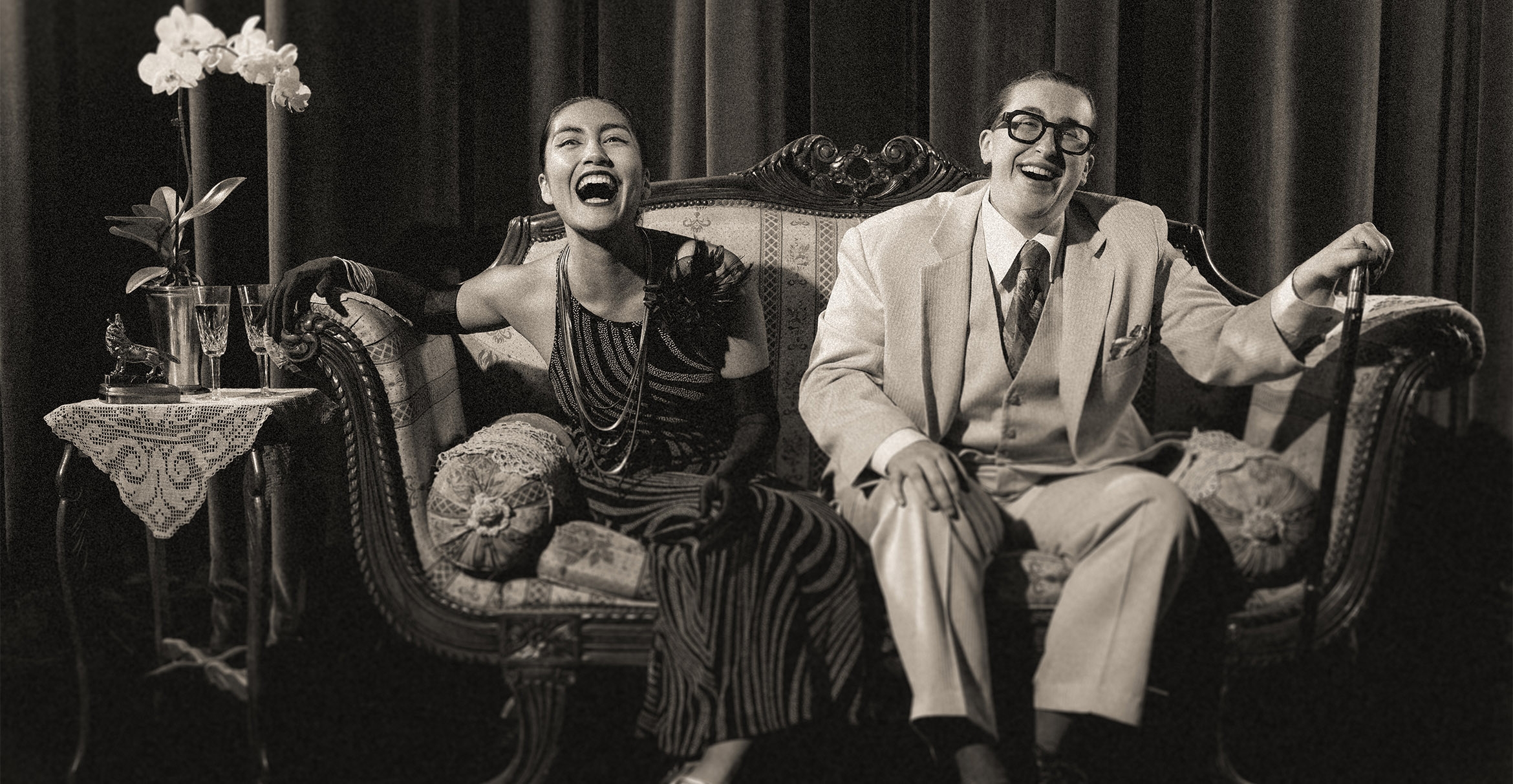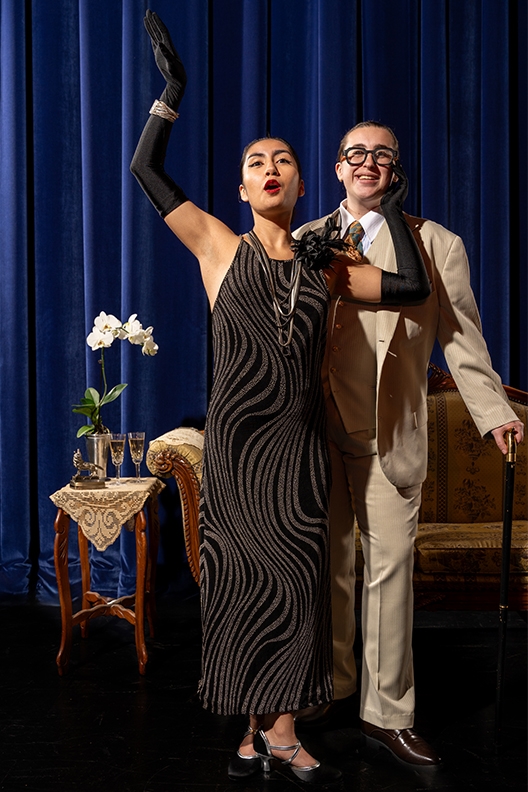
You may or may not have experienced bliss in your life. But you’ve almost surely encountered a few Blisses.
That’s the surname of the eccentric family at the center of Noel Coward’s classic 1925 comedy “Hay Fever,” which the UC Santa Barbara Department of Theater and Dance is presenting Nov. 14–19.
Self-centered, self-consciously theatrical and largely oblivious to anyone outside their immediate orbit, they’re the sort of people who are impossible to be around, but difficult to keep your eyes off of.
As fans of Hugh Laurie’s Dr. House know from experience, there’s something mesmerizing about individuals who flout convention and live by their own rules. We may recoil at their rudeness, but we’re also entertained by their transgressive behavior — and, perhaps, a little envious of their freedom.
“This play is about what Oscar Wilde called ‘the shallow mask of manners,’” said director Julie Fishell, a lecturer of acting and directing in the department. “These are Olympian bad-mannered people. But by the end of it, you get the sense that they are more authentically themselves than their guests, who are trying very hard to be civilized.”

Still amazingly fresh as it approaches its 100th birthday, “Hay Fever” is set in an English country house that is home to a bohemian family: Judith, a famous and temporarily retired stage actress; her husband David, a novelist; and their two grown children, Simon and Sorrel, who have artistic aspirations of their own.
What the put-upon maid Clara hopes will be a quiet weekend is massively disrupted when each of the Blisses invites a guest up from the city to spend the weekend — without telling any of the others. The result is a comedic clash of cultures, in which the newcomers attempt to navigate the strange new world they have entered.
“The play was written after Noel Coward spent time with Laurette Taylor, the famous American actress, her playwright husband, and their two children,” Fishell said. “They lived very independently. There was no communication within the family, which is directly reflected in the play.
“Taylor saw the opening in New York, and she was not happy! She saw no resemblance between the people on stage and her family, insisting ‘We are never intentionally rude.’ That’s the key to the Blisses. They aren’t written to be knowingly or calculatedly cruel. They’re being authentic.”
“Hay Fever” isn’t a farce, exactly, but nevertheless, Fishell has found timing is very important in making it work. “A few nights ago in rehearsal, we spent 20 minutes to half an hour trying to figure out the timing of removing two bottles of alcohol from a cart that it in motion — and weaving the dialogue around it,” she said.
Fishell said the play was chosen, in part, because of the enthusiasm her advanced acting class exhibited when she introduced them to Coward’s work this past spring. “They loved its absurdist, madcap quality,” she recalled. “It left me wanting to work more on this material.”
Both she and the student actors have found it an enjoyable challenge.
“The dialogue is so precise, it can almost seem mechanical,” she noted. “The actors are working hard to create three-dimensional characters who use that language, and wear those clothes. They are real flesh-and-blood people.
“We have a wonderful voice and speech professor, Michael Morgan, who is meeting with students every week to help them master the dialect,” Fishell added. “We’re also very conscious of 1920s English culture.
“For example, when a woman enters a room (in this society), a man stands. There are acceptable ways of greeting one another that directly relate to social class, and we’re paying particular attention to those social mores. We’re also looking at a lot of historical photos, and trying to capture the energy of those times.”
Maggie Welch also looked at a lot of period photographs in the run-up to the production. A senior at UCSB who is a double major in English and theater design, she designed the set to reflect the Bliss’s eccentricity, and their theatricality.
“In my research, I looked at a lot of Victorian houses,” she said. “The color palette they used to use was typically dark and heavy. Instead of (mimicking that), we turned it into something bright and airy. The colors and the patterns are very over-the-top to reflect who they are.”
In addition, prop person Mikayla Buhbe “has also been leaning into that comedic element,” Welch added. “She found some wonky lighters and ashtrays, and even a fun pair of sugar tongs. I didn’t know they made such things!”
Fishell has appeared in several Coward plays over the course of her career; she played Myra, one of the befuddled guests, in a production of “Hay Fever” in Chapel Hill, North Carolina. She has also met a few Cowardesque characters over the years.
“There was a couple that lived on the upper West Side in Manhattan that very much reminds me of the Blisses,” she recalled. “They were extremely theatrical. Thanks to their sense of joie de vivre, you always wanted to be around them.”
Such is the appeal of the blissful.
Shelly Leachman
Editorial Director
(805) 893-2191
sleachman@ucsb.edu



